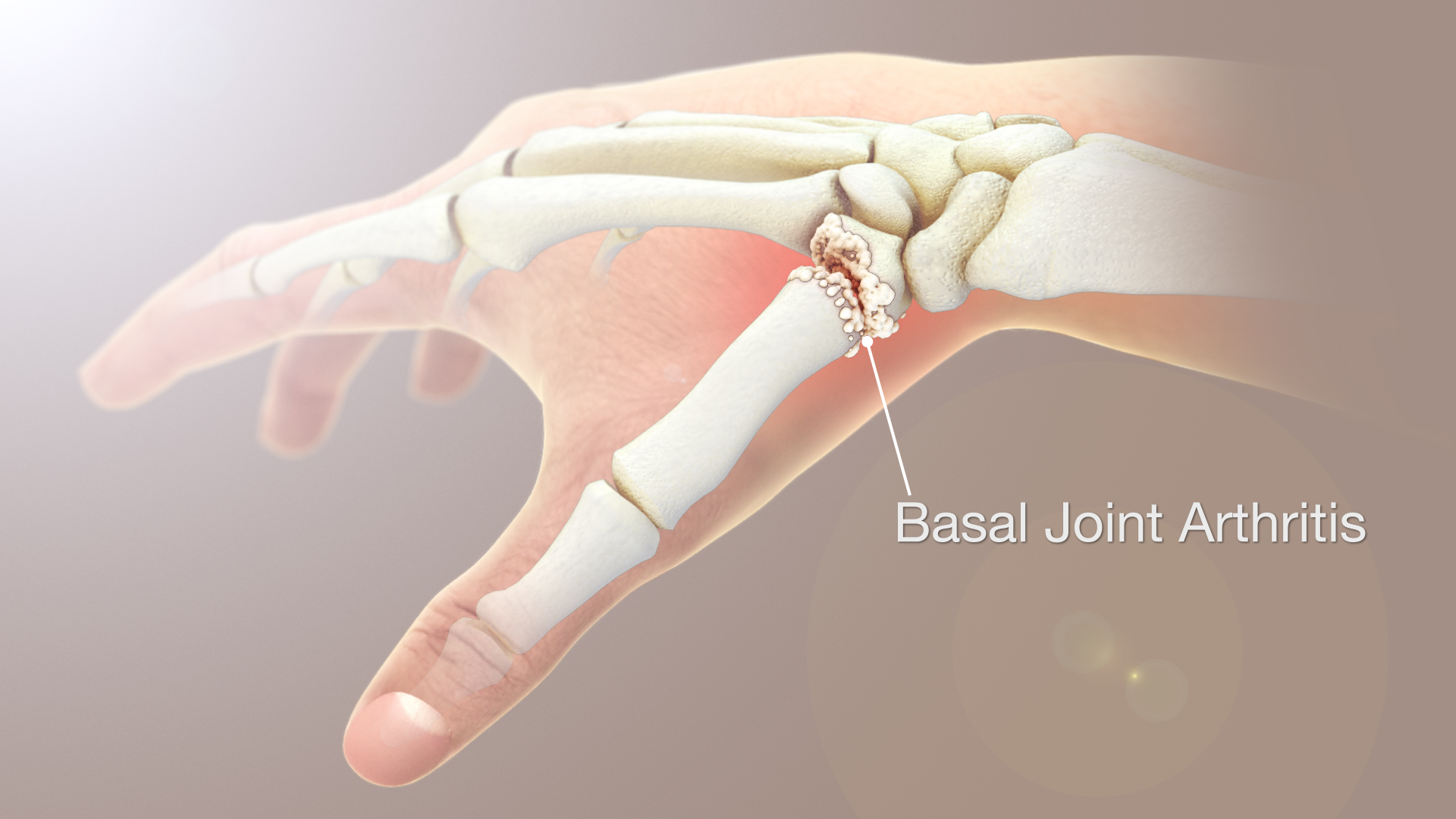The wearing out of the cartilage in the joint at the base of the thumb is known as basal joint arthritis. This type of arthritis is also called thumb arthritis. The basal joint helps the thumb to move around and perform various tasks that require motor skills such as turning doorknobs and opening jars. When the cartilage at this joint wears away, there is not enough cushioning left and the joints become rough and grind over each other with the movement of the thumb. It is a very painful condition and makes simple everyday tasks hard to perform.

Basal joint arthritis is the most common form of osteoarthritis. It usually occurs because of aging and hence, older people are most at risk for developing basal joint arthritis. However, it could also occur because of injury to the thumb.
Symptoms
The most common signs and symptoms of basal joint arthritis are:
- Pain at the base of the thumb while grasping an object
- Pain in the thumb when using it to apply force
- Swelling, tenderness, and stiffness at the base of the thumb
- Decreased range of motion
- Decreased strength when using the thumb to pinch or grasp an object
- Enlarged appearance of the joint at the base of the thumb
Causes
The main cause of developing basal joint arthritis is aging. Another cause is injury or trauma to the joint of the thumb. Certain factors increase the risk of developing basal joint arthritis. These factors are:
- Age above 40 years
- Female sex
- Fracture, sprain or any other injury to the thumb joint
- Activities that put more stress on the joint of the thumb
- Diseases such as rheumatoid arthritis that change the structure and function of the cartilage
- Hereditary conditions such as malformed joints
Treatment
If the basal joint arthritis is in the early stages, treatment would involve a combination of non-surgical methods. Medications such as topical medications (capsaicin or diclofenac), over the counter pain relievers (acetaminophen such as Tylenol or ibuprofen such as Advil), or prescription painkillers (celecoxib such as Celebrex or tramadol such as Conzip) may be prescribed. A splint is recommended to support the joint and limit the movement of the thumb. It is very helpful in decreasing the pain and ensuring the proper positioning of the joint while carrying out any activity. If the pain is not relieved by medication and splint, then corticosteroids may be injected into the basal joint to reduce the inflammation and reduce the pain. If none of these treatment methods work because of the severity of the condition, then surgery may be prescribed. There are several surgical options for the treatment of basal joint arthritis. These include joint fusion, joint replacement, osteotomy, and trapeziectomy. After the surgery, a cast or splint may be required to be worn for a period of 4 to 6 weeks. After the cast is removed, physical therapy is required to help regain the mobility and strength of the thumb.
Early diagnosis and treatment of this joint arthritis will help in reducing the severity of the condition and will also delay the progression of the disease. When the condition becomes severe, surgery is the only option that can help in treating this condition.
Disclaimer: The information in no way constitutes, or should be construed as medical advice. Nor is the above article an endorsement of any research findings discussed in the article an endorsement for any of the source publications.








